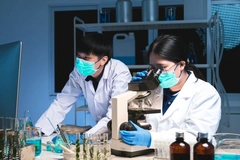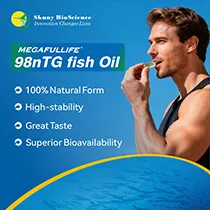Unveiling “utopia protein” Rubisco’s sustainability and high-quality nutritional profile
Demand for sustainable plant-based foods is driving ingredient innovations from novel sources, with Leaft Foods unlocking the world’s most abundant protein, Rubisco, at scale.
The New Zealand-based company touts it as the “utopia protein,” which “completely outperforms” traditional whey in terms of amino acid profile, digestibility, and functionality. It claims Rubisco generates 97% lower carbon emissions.
Recently, Leaft Foods partnered with Lacto Japan, a distributor and producer of specialty food ingredients, to accelerate the commercialization of its Rubisco Protein Isolate for Japanese food manufacturing.
Nutrition Insight speaks to Leaft Foods CEO Ross Milne about what Rubisco could mean for the future of sustainable nutrition.

Can you explain the science behind Rubisco, why it matters nutritionally, and who might benefit most from it?
Milne: There are a couple of aspects to that. First, it’s the most abundant protein on the planet — it’s present in every green leaf. Every time you eat a green leaf, the predominant protein you’re consuming is Rubisco. Humans have been eating it for as long as we’ve been eating plants.
From a nutritional point of view, it’s a really exciting protein. It’s plant-based, but with an amino acid profile superior to whey protein from dairy. More recently, we’ve learned how quickly it digests and how efficiently the body uses it — which is really exciting. The speed of digestion is remarkable: most of the protein is digested within the first 10–15 minutes.
Your team has managed to extract Rubisco from green leaves at a commercial scale — something many have tried but struggled to achieve. How did you make this possible?
Milne: You’re right — many have tried before us. We have an amazing team who have worked painstakingly for years, building on over 100 years of Rubisco research. With hard work, access to new technology, and some really smart people, we’ve managed to unlock the “code” and isolate Rubisco in a fully scalable process.
.jpg) Watch the interview with Leaft Foods CEO Ross Milne.There’s no magic answer beyond perseverance and building on the shoulders of those who came before us. It’s also the right moment in history — the technology available today simply wasn’t there in the 1970s and 80s when others attempted it. And of course, the passion of a dedicated team has been key. It hasn’t come easy, but we’re proud to have reached this point.
Watch the interview with Leaft Foods CEO Ross Milne.There’s no magic answer beyond perseverance and building on the shoulders of those who came before us. It’s also the right moment in history — the technology available today simply wasn’t there in the 1970s and 80s when others attempted it. And of course, the passion of a dedicated team has been key. It hasn’t come easy, but we’re proud to have reached this point.
What challenges did your team face in extracting and scaling Rubisco? Was technology the main issue?
Milne: Technology was definitely part of it, but it’s a combination of factors. This is an ambitious challenge, which many teams before us couldn’t quite unlock. We’ve been fortunate to have strong support from investors who provided the resources to assemble a dedicated team working on this for years.
The technology involved is a sensitive topic, as quite a bit of IP is involved. What I can say is that we’re using well-established food industry technology that is readily scalable from the current stage.
What is Rubisco’s environmental profile compared to other protein sources?
Milne: This is the really exciting part. On one hand, Rubisco delivers superior nutrition; on the other, we can produce it with a far lower carbon footprint than existing protein systems.
We work with alfalfa as our raw material. It has deep taproots, giving it high water efficiency. It’s perennial, so it stays in the ground for years without re-cultivation. It’s also a legume, meaning it fixes its own nitrogen, so we don’t need nitrogen fertilizers. That gives us an amazing starting point.
As a result, our process has one of the lowest — if not the lowest — carbon footprints in the protein market today. Beyond that, increasing efficiency per hectare and improving water efficiency offer major advantages for sustainable land use. We always think in terms of the whole system: how to create something more efficient than what exists today.
Why do plant proteins often face skepticism and how can proteins like Rubisco shift perceptions of plant-based nutrition?
Milne: The exciting thing with Rubisco is that it’s not just a good alternative — it’s superior. Too often, consumers are asked to sacrifice performance when moving to alternative proteins. With Rubisco, it’s the opposite: it has a better amino acid profile, excellent digestibility, and strong nutritional performance.
And the “bonus,” if you will, is that it comes from an incredibly sustainable source. That’s what excites us — but for consumers, it’s about nutrition first, without compromise. That’s a real point of difference in the plant protein space.
















